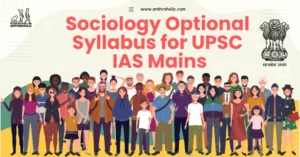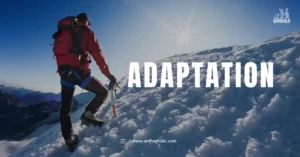AI Answer Evaluation Platform Live Now. Try Free Answer Evaluation Now
Arranged Marriages in India
An arranged marriage is a type of marriage in which the families or guardians of the bride and groom organize and approve the union with little to no involvement from the couple themselves [5]. Arranged marriages in India usually conform to caste endogamy, age, social status, allure, kundali (horoscope) matching, etc [5]. In India, a majority of the middle class believes that “marriage should be arranged, heterosexual, and everlasting”. It is extremely imperative to be left to chance alone. In fact, every Indian parent has thought about arranging the marriage of their children at some point in time. Despite constant criticism, the practice has demonstrated remarkable durability and evolution [5].

Arranged marriages in India are so common that there is a term for an unarranged marriage- a “love marriage” [5]. Here, partners choose each other based on romantic love, which consequently culminates in marriage [7]. In India love marriages frequently occur across caste or community lines and, in their archetypal forms, are self-arranged unions [6].
In the West, dating and cohabiting before engaging in matrimony are encouraged and commonplace. Thus, details about potential marital partners are more likely to be accurate than in communities where such practices are discouraged. Social norms in many parts of the world only allow arranged marriages where the families of the prospective bride and the prospective groom meet and the marriage is consummated. Inevitably, the amount of information that can be collected about prospective marital partners is somewhat quite low [7]. This is especially true in the Indian context.
Arranged marriages in India are also difficult to terminate, as couples are expected to continue to live together regardless of how the relationship unfolds [7]. Such marriages are also characterized by virilocality [7], i.e. patrilocal residence. This means that the married couple goes on to live in the in-laws’ residence. This makes it important for the bride’s family to gather as much information as they can from the groom’s observable characteristics before making marriage-related decisions [7].
Determining Factors of Arranged Marriages in India
The parents and other trustworthy parties (relatives, friends, matchmakers) [8] conduct extensive research before marriage is formally recognised to assure “compatibility”, “future prosperity”, and “sanjog” (divine satisfaction). The concept of divine satisfaction serves a dual purpose: i) facilitating a “predetermined” or “predestined” marriage and ii) easing the rejection of an unsuitable partner. The determination of suitable matches in Indian arranged marriages is dependent on:
- Caste Endogamy: Endogamy is the practice of marrying within a prescribed community or group. Marriages in India are endogamous, where caste plays a crucial role [4]. Essentially, a caste is a “hereditary social group that carries a name, an assigned ritual status, and a range of distinguishing traits” [5]. Caste is assigned at the time of birth and cannot be separated from the person during the course of their life. It is deeply embedded in Indian society and culture [4]. The primary role of caste is uniting families of the same caste and most importantly preventing exogamous marriages or inter-caste marriages. Caste involvement in marriage is a fundamental social requirement in several Indian communities. As such, arranged marriages are highly encouraged because it promotes social solidarity and parental approval [4].
- Age: Marriages in India are considered sacred. Thus Vedic texts that encourage the marriage of a virgin girl before menstruation are given much consideration. Early marriages are considered to protect women’s chastity, facilitate the transition of a girl from her father’s to her husband’s space, and assist in a girl’s adjustment to her husband and in-laws. As such, pre-puberty marriages are considered even more sanctified as the girl has not yet been polluted by menstruation. The age factor is far less significant in India’s urbanized population. Men and women in India marry on average when they are 26.2 and 22.2 years old, respectively, as compared to the United States where men and women marry at 28.2 and 26.1 respectively [5].
- Economic Status: Parents generally look for a financially secure, and wealthier household to marry their children into. The enhanced financial situation of the in-laws’ family, helps improve the social standing and image of the son or daughter who marries into that family [5].
- Education: Education is universally perceived to be related to positive values. Education seems to impart in young men (potential grooms) a kind of elegance and serenity that is alluring, not merely in speech but also etiquette and morality. Education fosters a type of cultural distinctiveness that is both respected and desired [7]. Even though it is viewed as highly advantageous and an essential way to advance socially, education is not a major requirement for marriage for a sizable portion of the lower caste population. However, for middle-class and upper-class populations in India, education holds a significant regard similar to socioeconomic status, age and values [5].
- Horoscopes/Astrology: Horoscope or kundali matching is an important feature of Indian marriages, specially arranged ones. Horoscopes are believed to be a primary connection between an individual and the cosmos. According to the belief that destiny moves in line with the cosmos, couples with comparable horoscopes are likely to make compatible marriages. Horoscopes are examined by an astrologer, numerologist, or the local Hindu pandit (priest), sometimes for days at a time. A marriage’s success can be predicted by the match percentage, which rises as astrological traits are more similar [5].
Arranged Marriages and Dowries
Arranged marriages in India are characterized by a type of marriage payment, known as dowry. Indian marriages are marked by the payment of dowries, which generally refers to a wealth transfer from the bride’s family to the groom’s at the time of marriage. Dowries are frequently seen as a pre-mortem payment to the daughter which technically remains her property or inheritance after marriage. This is a characteristic of virilocal societies. Furthermore, they signal the social status of the groom’s family. This is because large property and better education of the groom call for larger dowry payments [7].
In India, the frequency of dowry marriages has steadily increased. The amount of dowry that is demanded at the time of marriage has also increased. While a sizable dowry enhances the bride’s standing among others, a small one can make her life difficult, lead to severe misery, and in many cases, result in her death. Dowry deaths can happen in several ways, such as through poisoning, hanging, or burning. Special legislative safeguards to prevent such abuse and cruelty have been passed as a result of the realization that women in India have historically been subject to dowry-related cruelty by their inlaws, which sometimes results in their death [3].
Another possible cause is the prevalence of hypergamy in India, especially among Hindu communities. Hindus prefer to arrange a daughter’s marriage to a man who has a higher social rank than they have. Such unions entail the payment of a groom price, bridging the status gap between bride-givers and bride-takers [3]. Studies that examine the patterns of dowry payments in India show that, despite significant variation between castes, religions, and states, the average dowry has been fairly consistent over time. Dowry is not just a Hindu custom in India. Dowries among Christians and Sikhs have significantly increased in recent years. Muslim marriages receive average dowries that are somewhat slightly less than Hindu marriages [3].
Dowry trends in Indian states have some striking exceptions. Kerala has seen the highest average dowries in recent years and has experienced rapid and ongoing dowry inflation since the 1970s. Punjab also exhibits a consistent rise in Sikh dowries. Haryana and Gujarat are two additional states with less pronounced inflationary tendencies, however the latter shows a substantial rise from 2000 to 2009. On the other side, dowry dropped in West Bengal, Tamil Nadu, Orissa (with a slight increase), and Maharashtra. There are however no conclusive explanations yet for dowry differences between states [3].
Are Arranged Marriages in India declining?
A decline in arranged marriages is indicative of the diminishing significance of the institutions of caste, religion, and other aspects of a potential spouse. Additionally, it emphasizes the significance of love or interpersonal compatibility as well as increased interaction between potential spouses before marriage. Moreover, this is likely an indication of a Western model of marriage. Research indicates that the institution of arranged marriage may be in decline in the states of Haryana, West Bengal, Delhi, Ladakh, Gujarat, and Andhra Pradesh. In fact, it has been suggested that arranged marriages will eventually disappear with India’s modernization [1].
Data from a 2016 study suggests a “shift” in arranged marriages, rather than a “decline”. Marriage behaviors shifted in the directions that were anticipated from the 1970s to the 2000s. Consanguineous marriages decreased and intercaste marriages increased as young women got more involved in selecting their own spouses, pre-wedding meetings between partners increased, and young couples interacted more frequently. Significant majorities of recent marriages still exhibit the characteristics of an arranged marriage, although many of these modifications are moderate in scale. It is obvious that arranged marriages are not going away anytime soon [1]. An arranged marriage was reported by 93% of married Indians in a 2018 poll of more than 160,000 families. Only 3% of people reported having a “love marriage,” and 2% said that their marriage was “love-cum-arranged” [2].
These tendencies suggest a blending of Western and Indian practices rather than a unilateral shift towards Western marriage practices [1]. An interesting take on the hybridization of Indian arranged marriages and Western self-choice marriages can be seen in a Netflix show called Indian Matchmaking. It is an Indian reality series that showcases the traditional practices of Indian matchmaking while also highlighting mutual attraction, compatibility, and love [1].
In India we don’t say ‘arranged marriage.’ There is ‘marriage’ and then ‘love marriage’.
Indian Matchmaking on Netflix
References
[1] Allendorf, Keera, and Roshan K. Pandian. “The Decline of Arranged Marriage? Marital Change and Continuity in India.” Population and Development Review, vol. 42, no. 3, Wiley-Blackwell, Sept. 2016, pp. 435–64. https://doi.org/10.1111/j.1728-4457.2016.00149.x.
[2] BBC News. “What the Data Tells Us About Love and Marriage in India.” BBC News, 8 Dec. 2021, www.bbc.com/news/world-asia-india-59530706.
[3] Dang, Geetika, et al. “Why Dowry Deaths Have Risen in India?” ASARC, June 2018, crawford.anu.edu.au/acde/asarc/pdf/papers/2018/WP2018-03.pdf.
[4] Dumpala, Roshni. “Caste Endogamy: A Multidimensional Analogy of Caste in the Indian Society.” International Journal of Law Management and Humanities, vol. 5, no. 1, 2022, www.ijlmh.com/wp-content/uploads/Caste-Endogamy-A-Multidimensional-analogy-of-Caste-in-the-Indian-Society.pdf.
[5] “Indian Matchmaking.” IMDb, IMDb.com, 16 July 2020, https://www.imdb.com/title/tt12580168/.
[6] Khandpur, Umang, “Arranged Marriage in Village & Middle Class India” (2017). Lewis Honors College Capstone Collection. https://uknowledge.uky.edu/honprog/29
[7] Mody, Perveez. “Care and Resistance.” Anthropology and Humanism, vol. 45, no. 2, 2020, pp. 194-201, https://doi.org/10.1111/anhu.12301. Accessed 28 Apr. 2023.
[8] Munshi, Soumyanetra. “‘ARRANGED’ MARRIAGE, EDUCATION, AND DOWRY: A CONTRACT-THEORETIC PERSPECTIVE.” Journal of Economic Development, vol. 42, no. 1, The Economic Research Institute, Mar. 2017, pp. 35–71. https://doi.org/10.35866/caujed.2017.42.1.003.
[9] Saini, Navneet. “MARRIAGE IN THE MODERN INDIAN SOCIETY: AN OVERVIEW.” International Journal of Creative Research Thoughts, vol. 10, no. 2, Feb. 2022, ijcrt.org/papers/IJCRT2202118.pdf.




